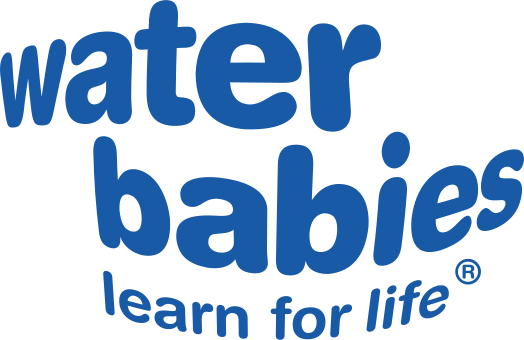As the ecological repercussions of our actions become more and more obvious, we need to adopt more sustainable practices. The choices we’re all making today shape the world our little ones will inherit tomorrow. But did you know the nappies we choose for our babies can make a big difference in the environmental conversation?
Currently, the most widespread option are disposable nappies. Since their humble beginnings in the mid-20th century, disposable nappies have skyrocketed to prominence, with a whopping 95% of European families opting for their convenience. This is also the case for over 90% of American households, which use single-use nappies exclusively, adding to a staggering 20 billion nappies a year. In the UK, which has 1.7 million children under two years old, at least 90% are using disposables. These are massive figures, but how did we get here?
In this blog, we’ll cover how disposable nappies quickly evolved into the mass-produced items which dominate the market today. We’ll also look at the hefty environmental cost of single-use nappy production, which requires vast amounts of resources like water, energy, and raw materials. So, grab a cuppa, get cozy, and let’s dive deep into the world of disposable nappies!
Disposable Nappies: Tracing the Timeline from Inception to Current Market
For much of human history, if babies wore nappies at all, they were typically made from cloth which presented a significant burden for families, particularly women. From frequent leaks to hours spent on washing and drying, caring for little ones with cloth nappies was a labour-intensive task that often fell disproportionately on the shoulders of mothers and female caregivers.
Then, in the mid-1940s, a resourceful American mum named Marion Donovan designed a baby “pant” featuring a plastic layer, using materials like shower curtains and nylon parachute fabric for her early prototypes. This invention marked the birth of the world’s first disposable nappy. By 1948, Johnson & Johnson had developed the first mass-market version of Donovan’s creation. A decade later, in 1961, Procter & Gamble introduced Pampers, followed by Huggies from Kimberly Clark seven years later.
During the ’60s and ’70s, the two industry giants, Pampers and Huggies, continued to refine the single-use nappy and develop the machinery required for mass nappy production, as well as their marketing efforts to promote them. A significant breakthrough occurred in 1980 with the introduction of a super absorbent polymer material, originally developed for agricultural use, which allowed for much more compact nappies and even greater absorbency. Since then, single-use nappies have dominated the global nappy industry. And more than 60 years after Huggies and Pampers were first introduced, these two brands continue to control around 80% of the disposable nappy market.
According to a report published by Grand View Research, the global baby nappy market was valued at 82.59 billion U.S. dollars in 2022. And it’s expected to grow, surpassing the value of 144.4 billion U.S. dollars by the end of 2031. Disposable nappies and/or products led the global industry in 2022, capturing the biggest share of over 65.80% of the total revenue, and it’s projected to retain its dominance throughout the forecast period. In fact, disposable baby nappies hold the largest market share in sales among all absorbent hygiene products (AHPs), which also encompass other items like menstrual pads and adult incontinence products.
Down the Production Line: Examining the Environmental Impact of Single-Use Nappies
While the disposable nappy industry is in very good health, single-use nappies guzzle up a hefty number of resources right from the get-go. From the vast quantities of water and energy needed to manufacture them to the raw materials like plastics and wood pulp, there is an environmental cost.
Nowadays, most single-use nappies are made from various types of polymers and include three distinct components, each serving specific purposes:
- an inner protective layer
- an absorbent core layer (which includes an acquisition and distribution layer)
- an outer plastic layer, as described in an article published by the Science of The Total Environment journal.
The inner layer, crafted from a polymer-based material, acts as a barrier, shielding the absorbent core layer and safeguarding the baby’s delicate skin from moisture. Typically, this layer consists of a sheet composed of polypropylene-based materials. Some variants may also incorporate pharmaceutical-grade petrolatum and stearyl alcohol to moisturize the skin and enhance comfort.
The outer layer, traditionally made from polyethylene materials, prevents leakage from the nappy. However, the pivotal component of the nappy is the core, which absorbs and retains liquid waste. This core is typically composed of fluff pulp derived from cellulose materials or super-absorbent polymers (SAP) like sodium polyacrylate. Cellulose pulp is a renewable material mainly obtained from coniferous woods. According to the Science of The Total Environment journal, the absorbent pad requires around 200–400 kg of fluff pulp to supply one baby with disposables for 1 year (approximately one billion trees per year globally, and 4.5 trees approximately for each baby who uses them).
We get it, single-use nappies are convenient for busy families, but they do represent significant challenges for the environment across their entire life cycle, from production to disposal. They’re gobbling up resources, polluting our air and oceans, and piling up in our landfills. Some studies such as the ‘Review on the Manufacturing and Properties of Nonwoven Superabsorbent Core Fabrics used in Disposable Diapers’, published in the International Journal of Chemical Sciences, have estimated over 23 kg of petroleum and 137 kg of wood are needed to produce single-use nappies per baby per year. Around 70% of all nappies manufactured rely on wood pulp sourced from trees. The growth of these trees before harvesting necessitates various resources such as plant nutrients, pesticides, mechanical energy, and water. With the staggering rate of tree consumption in the nappy manufacturing sector, the diversity of plant species is diminishing faster than they can be replenished through replanting efforts.
According to the Ellen MacArthur Foundation, the industry gets through 248 million barrels of crude oil annually, while creating over 38 million tons of solid waste each year. In their report “A Circular Economy for Nappies”, they break these numbers down, revealing each single-use nappy contains one cup of crude oil. In a world in which 20,000,000 disposable nappies are produced per hour, and 73 tonnes of solid waste is created per minute, this is not a sustainable model.
As we close this first blog on the history and environmental impacts of disposable nappy production, it’s clear while they have revolutionized parenting and childcare with its convenience, they come with a hefty cost to our planet. As a multi-billion-dollar industry, disposable nappies have left a lasting imprint on both our lives and our environment. But our journey through their ecological legacy doesn’t end here. Come along with us in the next blog as we learn about the disposal of single-use nappies and the environmental effects it involves.
Piling Up: The Mounting Problem of Nappy Waste
As we’ve been learning, when it comes to disposable nappies, their impact on the environment is hard to ignore. When they aren’t incinerated, they end up in landfills at an alarming rate, contributing to the already overflowing waste stream and posing a major global challenge. What makes matters worse is these single-use nappies are designed to last, with their durable plastics and superabsorbent polymers taking centuries to break down. With the worldwide demand for disposable nappies on the rise, finding sustainable solutions is more urgent than ever.
In the United States, 4 million tons of disposable nappies are thrown away every year, with approximately 80% ending up in landfills, according to the Environmental Protection Agency (EPA). Australia sees around 3.75 million nappies disposed of daily, adding significantly to waste levels. Similarly, Europe adds another 8 million nappies to the mix each day, as reported in 2014.
In Korea, according to the report ‘Evaluation of a Disposable-Diaper Collection Trial in Korea through Comparison with an Absorbent-Hygiene-Product Collection Trial in Scotland’, published in 2018, a whopping 240,000 tons of used nappies are generated annually, leading to environmental concerns such as, increased methane production and groundwater contamination. South Africa faces its own waste challenge, producing about 1.1 million tons of disposable nappy waste each year, according to a study published in 2020.
In developing countries, the situation is even more dire, with a growing number of disposable nappy users and limited resources to handle the waste. With countries such as India, which has an estimated 55 million children under two years old, but only around 2% of them using disposables, or China with 40 million and only 6% in single-use nappies, the potential market is vast.
When it comes to disposing of soiled disposable nappies, they’re treated like regular solid waste. That means they’re disposed using popular disposal methods for solid waste, such as burning, composting, landfilling, and open dumping. Disposable nappies make up about 4% of solid waste, ranking as the third largest single consumer item in landfills after just one use, as per ‘Disposable Diapers: Impact of Disposal Methods on Public Health and the Environment’, published by the American Journal of Medicine and Public Health.
It’s no wonder they’re adding to the ever-growing pile of waste, increasing the strain on landfills and waste management systems. According to WRAP, a climate action NGO working around the globe to tackle the causes of the climate crisis, around 3 billion disposable nappies are disposed of each year in the UK, representing an estimated 2% to 3% of all household waste.
In a house with children, disposable nappies contribute to at least half of the total household waste. WRAP also specifies newborns can accumulate a significant carbon footprint in no time, as they typically go through 4,000-6,000 nappies before being potty-trained. According to WEN (Women’s Environmental Network), that’s 2,000 single-use nappies by baby every year, over 2.5 years. Plus, disposing of these nappies isn’t cheap, with recycling contamination alone costing taxpayers millions – £1.5 million, just in North London. Weighing 9.55g, they represent up to 57.3kg of plastic waste over that time. It’s time to rethink our approach to disposable nappies and find more sustainable solutions.
Another challenge we need to address is – they take an eternity to break down. As mentioned earlier, most disposable nappies are made from wood pulp (wood fibre reduced chemically or mechanically to pulp), cotton, viscose rayon, and several plastics like polyester, polyethylene and polypropylene, according to a 2021 report from the United Nations Environment Programme (UNEP). Due to their synthetic materials and construction – the average disposable nappy is 61% plastic-, these nappies do not biodegrade easily. If not incinerated, they linger in landfills for centuries, not just years. And because nappies are usually thrown out with babies’ waste, it’s incredible difficult to recycle them.
Made almost entirely of petroleum-derived plastic, from the polyester exterior to a core of hyper absorbent pellets, single-use nappies take up to 500 years to break down and decompose, according to the EPA. And even then, these plastic components never completely disappear; they just get smaller and smaller, turning into microplastics. That means every nappy ever used is still out there somewhere.
This long decomposition period exacerbates pollution and environmental degradation, posing risks to ecosystems and wildlife. Modern landfills are specifically engineered to impede biodegradation, leading to a continual accumulation of waste over time. Landfills stuffed with disposable nappies emit greenhouse gases like methane and CO2, contributing to climate change. Plus, there’s the risk of harmful chemicals leaching into the soil and water, posing a threat to wildlife and ecosystems. The staggering number of disposable nappies currently resting in landfills worldwide is a concerning issue, as they release harmful chemicals like dioxins, Sodium Polyacrylate (SPA), phthalates, heavy metals, and other toxins into the surrounding soil and water. These substances pose a risk of accumulation in fish and other aquatic organisms, potentially affecting the entire food chain. Over time, this accumulation can lead to significant problems such as bioaccumulation and biomagnification, as highlighted by the World Health Organization in 2016.
Soiled disposable nappies also contribute to the amount of human faecal waste, including microorganisms and potentially harmful pathogens, within landfills. Little ones under 12 months old are especially effective carriers of enteric pathogens (pathogens present in the human gastrointestinal tract), and inadequate management practices can lead to the contamination of groundwater by pathogens present in nappy leachates. According to the American Journal of Medicine and Public Health, these pathogens include more than 120 different viruses such as Entero-viruses, rotavirus, enteric, adenoviruses, and human caliciviruses (noroviruses); also, bacterial pathogens such as Escherichia coli, Salmonella species, Shigella, Vibrio, Clostridia, Streptococcus, and Bacillus species among others.
Instead of winding up in landfills, disposable nappies might be burnt along with household waste in incinerators. However, this method isn’t without controversy. While incinerators are designed to burn waste efficiently, they’re seen as costly. Plus, there are concerns about air pollution since burning releases CO2 emissions, adding to climate change. When disposable nappies are burned, especially in facilities with inadequate pollution controls, they emit harmful substances like dioxins, furans, and other toxic greenhouse gases, as well as chlorine and carbon monoxide. This leads to toxic ash and smoke filled with pollutants like carbon monoxide and phthalates, which can harm the air we breathe. The ash, carried by wind or water, can also contaminate water sources, posing risks to both humans and the environment.
This takes us to the troubling issue of plastic pollution in our oceans and the significant role played by disposable nappies. As stewards of water safety and advocates for sustainable practices, we’ll explore how our choices regarding nappies can impact marine ecosystems, underscoring the importance of eco-conscious decisions even beyond the poolside.
Waves of Waste: The Global Impact of Plastic Pollution in our Oceans
As society grapples with the escalating crisis of plastic pollution, single-use nappies emerge as a significant contributor to this pressing environmental issue. According to Statista, 350 million metric tons of plastic waste are currently generated per year. In 2022, the global production of plastics surged to a 400.3 million metric tons, reflecting a rise of approximately 1.6 percent compared to 2021. Projections indicate global plastic waste production could triple by 2060, reaching an astounding one billion metric tons.
In addition to the staggering figures above, less than 10 percent of plastic waste is currently recycled each year, with the vast majority either ending up in landfills or being incinerated, leading to the emission of harmful pollutants. Additionally, approximately a quarter of plastic waste is either mismanaged or littered, exacerbating environmental degradation. As we’ve seen with single-use nappies, mismanaged plastic waste often ends up in illegal dumpsites or is burned in open pits, and a considerable amount also enters natural environments like rivers and oceans. According to another article published on Statista, from 1970 to 2019, an estimated 30 million metric tons of plastic accumulated in the ocean, while over 100 million tons were found in rivers and lakes. This widespread presence of plastic waste in the water can cause severe harm to marine life and ecosystems.
But to tackle this issue effectively, we must address its root causes. It’s important to recognize developed countries, including the UK, play a role by exporting vast amounts of plastic waste to regions which lack the infrastructure to manage it. In recent cases, companies have been fined for illegally shipping dirty nappies and other waste abroad, highlighting the urgency of finding sustainable solutions to this global challenge.
As we conclude our exploration of the ecological impact of single-use nappies, it’s clear that their convenience can come at a significant environmental cost. From production to disposal, they contribute to resource depletion, landfill overflow, and pollution. However, as awareness of these issues grows, so does the importance of seeking alternative solutions which prioritize sustainability. It’s time to reconsider our nappy choices and embrace options that are kinder to our planet, such as reusable nappies. By making informed decisions, we can pave the way for a cleaner, greener future for generations to come. Let’s embark on this journey together!


